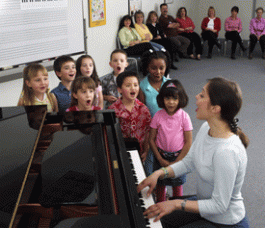This week’s topic of Technology and Emotional Behavioral Disorders is discussed around the following articles:
- http://at4schools.wetpaint.com/page/Technology+Aided+Strategies+for+students+who+are+Emotionally+Disturbed
- http://www.csun.edu/cod/conf/2005/proceedings/2466.htm
- Using the Computer with Students with Emotional and Behavioral Disorders
Key strategy for dealing with students with these type of disorders is POSITIVE, non-confrontational mannerisms. This is so important for your student, classroom, and student community. Through my own experience with students with these types of disorders, I have found these students to be challenging, insightful, and intelligent. I have seen these students be successful in school when they are in a classroom that has a caring, loving, and consistent adult role model.
The first article has some great tips about how to integrate technology into your classroom for students with emotional behavioral disorders. I have used most of these strategies in my classroom and have had success with them. The strategies that I felt worked the best were behavior charts with younger students, iPods with middle school students, and Brainpop, Inspiration, and Wii with my middle school students.
The second article talks about more statistics about which students are more likely to have these types of disorders. It specifically talks about how the lack of training for staff and implementing computers for a contained classroom of students with this type of disorder was being experimented with.
The third article is quite old and has some good information, although I believe these types of disorders are more widely understood now as to twenty years ago. It does offer some great ways to group students and use cooperative learning strategies to help these student learn to work with others and manage their behavior when working with others.
I believe the key strategies for students that suffer from emotional behavioral disorders is patience, consistency, and positivity. In my experience, I have found in general that students that have these types of disorders are intelligent and inquisitive. Integrating technology into your classroom for these students shouldn’t be a difficult or time consuming task. What I felt worked for me was to over-plan for these students. I always had something in my back pocket for days when the student needed a little extra attention or a quite place to calm down.
I stayed consistent with my discipline in the classroom. This was challenging with the student, but necessary for him/her to understand that there were consequences for behavior that was not safe for the classroom. As time went along, this consistency helped my student have less meltdowns and looked forward to music class. My consistency with classroom cues, rules, and songs helped the student know what to expect each time in class. That not only helped these students but all my students feel comfortable in my classroom.
Allowing iPods in my classroom was a key motivator for my students, especially for my students with emotional behavior disorders. It gave them a way to shut out the noise in the room as well as give them a focus to calm down with. I would assume if you have access to iPads, that these instruments would be great way to motivate students to learn as well. The many different apps that are available to supplement your curriculum is exciting! This excitement can help motivate behavior for students that struggle with these types of disorders.
